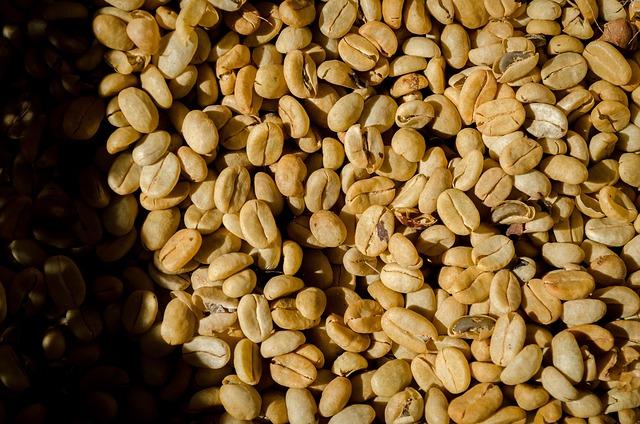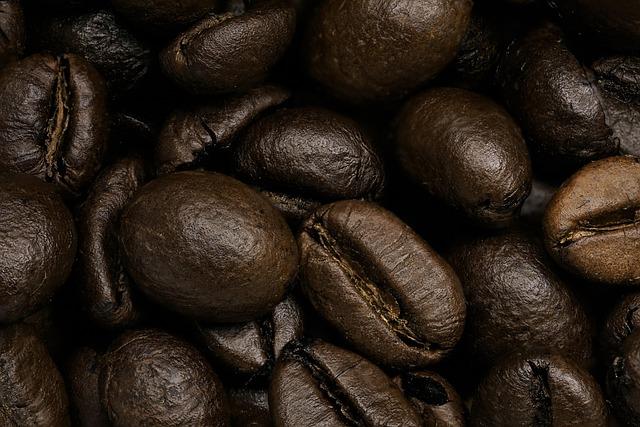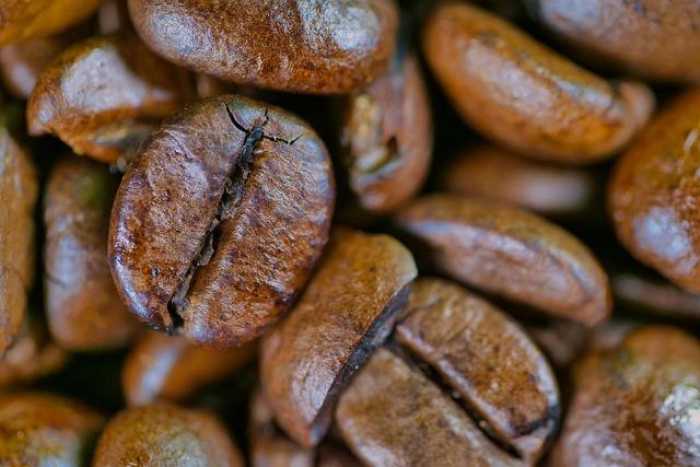Hey there, fellow coffee lovers! Are you ready to embark on a caffeinated adventure that will take yoru morning cup from basic to barista-approved? If you’ve ever found yourself staring blankly at the coffee aisle, overwhelmed by the dizzying array of coffee bean types, you’re definitely not alone. With so many options – from the beloved Arabica to the bold Robusta adn everything in between – it can feel a bit like trying to choose your favorite superhero from an entire comic book universe! But fear not! in this casual guide, we’re going to unlock the mysteries of coffee beans and help you navigate through the different flavors, aromas, and brewing styles to transform your coffee game. So grab your favorite mug, and let’s get brewing! ☕️✨
Exploring the Flavor Spectrum of Coffee Beans
When it comes to coffee,every cup is a journey through a world of flavors that can frequently enough surprise even the most seasoned drinkers. Different coffee beans bring an array of unique tastes depending on their origin, processing methods, and even the roast profile. For instance, Ethiopian Yirgacheffe beans are known for their shining, floral notes and citrus zest, while Colombian Supremo beans often wow drinkers with their rich, nutty undertones and balanced sweetness. Here’s a quick look at some fascinating types:
- Sumatra Mandheling: Earthy and full-bodied, with hints of chocolate and spice.
- Guatemalan Antigua: Bold and complex, featuring cocoa and mild spice.
- Brazilian Santos: Smooth and sweet, known for its chocolate and caramel notes.
Exploring the flavor spectrum doesn’t stop at the type of beans; processing plays a crucial role too. Coffee can be washed, natural, or honeys processed, each method imparting distinct flavor characteristics. A washed coffee like Costa Rican Tarrazú tends to boast a clean, bright flavor profile, perfect for highlighting fruity and acidic notes. In contrast, natural coffees like Brazilian are frequently enough more robust, with a heavier body and flavors reminiscent of berries. Here’s a table to help you digest these flavor nuances:
| Coffee Type | Flavor Notes | Processing Method |
|---|---|---|
| Ethiopian Yirgacheffe | Citrus, Floral | Washed |
| Sumatra mandheling | Earthy, Chocolate | Natural |
| Guatemalan Antigua | Cocoa, Spice | Washed |

The Lowdown on popular Coffee Bean Varieties
When it comes to coffee, not all beans are created equal! here’s a quick rundown of some of the most beloved coffee bean varieties that can transform your morning routine into a delightful ritual:
- Arabica: known for its smooth, sweet flavor, Arabica beans are frequently enough considered the cream of the crop. They thrive in higher altitudes and are less bitter, making them a favorite for gourmet brews.
- Robusta: If you love a bold, strong cup, Robusta might be your new best friend. These beans pack a punch with higher caffeine content and have a rich, earthy taste that can stand up to milk and sugar.
- Liberica: For the adventurous sipper, Liberica beans offer a unique floral and fruity profile. Grown mainly in the Philippines and West Africa, they might just surprise your taste buds!
- Excelsa: Often used alongside other varieties to add complexity to blends, Excelsa has a distinct tartness and hints of dark fruit flavors. It’s a fun twist for those looking to expand their coffee palate!
So, what’s the deal with flavor profiles? Here’s a snapshot of how these popular varieties stack up against each other, helping you decide what to try next:
| Bean Type | Flavor Profile | Body |
|---|---|---|
| Arabica | Sweet, Smooth | Medium |
| Robusta | Bitter, Earthy | Full |
| Liberica | Floral, Fruity | Medium |
| Excelsa | Tart, Dark Fruit | Light |

Brewing Techniques for Bean Lovers
Once you’ve selected your favorite beans, the next step is to master various brewing methods to fully unleash their unique flavors. French Press is a classic choice that allows the oils and natural flavors to shine through.Just coarsely grind your beans, steep for about four minutes, and then press down the plunger. If you’re in the mood for something more delicate, try the Pour-Over technique, which gives you control over the water flow and temperature. Just remember to bloom the coffee frist – pour a small amount of water over the grounds and let it sit for 30 seconds before continuing to pour!
If you’re a fan of cold brews, go for the Cold Brew Method. this technique requires a coarser grind and a longer steeping time – usually 12-24 hours in the fridge. If you’re short on time, the Aeropress can be a game-changer. It’s portable,quick,and produces a rich,espresso-like shot. Don’t forget to experiment with ratios and grind sizes to find the perfect brew for your taste. For reference, check out the table below for a quick comparison of brewing methods:
| Brewing Method | Grind Size | Steep Time | Flavor Profile |
|---|---|---|---|
| french Press | Coarse | 4 minutes | Rich, full-bodied |
| Pour-over | Medium | 2-3 minutes | Crisp, clear |
| Cold Brew | Coarse | 12-24 hours | Smooth, sweet |
| Aeropress | Medium-Fine | 1-2 minutes | Strong, concentrated |
Picking the Perfect Bean for Your Next Cup
When it comes to coffee, the choice of bean can considerably influence the flavor profile of your brew. To get started on your quest for the perfect cup, consider these popular types of coffee beans that each bring their own unique character:
- Arabica: known for its smooth, mild flavor and aromatic qualities, Arabica beans are the classic choice for coffee lovers. They typically have a higher acidity, which brings out fruity and floral notes.
- Robusta: If you prefer a stronger kick, Robusta beans are your best bet. They have a higher caffeine content and a more bitter flavor, frequently enough described as earthy or nutty. Perfect for espresso blends!
- Liberica: A little more exotic, Liberica beans offer a unique, floral fragrance and a somewhat woody flavor. Not commonly used, but adventurous drinkers may find their distinctiveness appealing.
- Excelsa: Frequently enough used in blends, Excelsa beans provide a tart fruitiness and are known for their complex, sweet flavors that can balance richer coffee notes.
As you explore these options, it’s also key to think about the roasting process that suits your taste.Here’s a quick look at how different roast levels can play a role in the flavor experience:
| Roast Level | Flavor Profile |
|---|---|
| Light Roast | Bright and acidic, with a pronounced flavor of the bean itself. |
| Medium Roast | A balance between acidity and body, featuring a fuller flavor with nutty or chocolatey notes. |
| Dark Roast | Rich and bold, often with smoky or caramelized flavors dominating the cup. |
Q&A
Q&A: Unlocking the Brew: A Casual Guide to Coffee Bean Types! ☕️
Q: What’s the deal with coffee bean types? Aren’t all coffee beans just… coffee?
A: Ah,my friend,that’s where you’re wrong! Coffee beans are like the different stars in the night sky—each has its own flair. The main players are Arabica and Robusta, and trust me, they have some juicy differences. Arabica beans are known for their smooth, sweet flavor and are usually found in your fancy coffee shop brews. Robusta beans,on the other hand,pack a bigger punch with higher caffeine content and a more bitter taste,often used in espresso blends. So, yeah, there’s way more than “just coffee” going on!
Q: What about other varieties? I’ve heard terms like Liberica and Excelsa. Are they real or just fancy coffee lingo?
A: Oh,they’re as real as my love for a late-night espresso! Liberica has a super unique flavor that’s frequently enough described as floral and fruity,with a strong woody aroma. It’s like coffee’s quirky cousin that you only see at family reunions! Excelsa,while technically a type of Liberica,brings a dark,fruity vibe with a hint of tartness. They’re not as common, but if you see them, give ‘em a whirl for a fun flavor adventure!
Q: How do the bean types affect my brew? Can I taste the difference?
A: You betcha! Each bean type brings its own twist to the cup. Arabica’s smoothness lends itself to a lovely filter coffee, while Robusta stands strong in an espresso shot. That bitter edge can transform your morning cup into a wake-up call! Plus, the region where the beans are grown can contribute additional flavors. Think of them like fine wine; the terroir can change the whole experience.
Q: I keep hearing about single-origin vs.blends.what’s the scoop?
A: Ooooh, the classic showdown! Single-origin coffee is like the solo artist of the coffee world—it comes from one specific location and showcases those unique flavors just like a local band. Blends mix beans from different regions to create a balanced, harmonious flavor, kinda like a supergroup coming together. So, if you’re feeling adventurous, sample single origins, but if you wanna play it safe? A good blend has your back!
Q: How do I know what coffee bean type I like? Is there a test?
A: Consider it a delicious journey! The best way to find your fave is by tasting various types. Hit up local coffee shops, join cupping sessions, or even do a little home brewing with different beans. Take notes of what hits the spot! Are you loving that delicate floral hint of an Arabica, or are you into the bold bite of a Robusta? Exploratory caffeine is the name of the game!
Q: Any pro tips for brewing the perfect cup with my chosen beans?
A: Oh, you’re about to level up your brew game, my friend! 1. Freshness is key—always buy whole beans and grind just before brewing. 2. Water matters: Use filtered water for the cleanest taste. 3. Pay attention to your brew method—different beans shine in different setups! Pour-over? Go for lighter roasts. Espresso? The bolder, the better! And don’t forget to experiment with ratios until you find your perfect balance!
Q: How can I store my coffee beans to keep them fresh?
A: Treat your coffee beans like royalty! Keep them in an airtight container, away from light, heat, and moisture (so definitely not in the fridge). A dark cupboard is the ideal spot. If you really wanna get fancy, invest in a vacuum-sealed bag. fresh beans mean fresh flavor, and nobody wants stale coffee—eww!
Q: Any final thoughts for a coffee newbie diving into the world of beans?
A: You’re embarking on an exhilarating caffeine-filled journey, and I’m here for it! Don’t overthink it; just have fun experimenting with different beans, flavors, and methods. Everyone’s taste buds are different, so there are no wrong choices—only future caffeine connoisseurs in the making! Cheers to your brewing adventures! ☕️✨
To Wrap It Up
And there you have it, coffee lovers! You’ve officially unlocked the brew and are now equipped with the knowledge to navigate the wonderful world of coffee bean types like a pro. Whether you’re a fan of the bold, chocolatey notes of a dark roast or you prefer the light, fruity flavors of a specialty bean, knowing your coffee can turn a simple cup into an entire experience.
Remember,there’s no right or wrong when it comes to your coffee preferences—it’s all about what makes YOUR taste buds dance with joy. So, next time you’re at your favorite café or perusing the aisles of your local grocery store, you can confidently choose your beans with passion and purpose!
Now go forth and brew—it’s time to savor those delicious sips! And hey, don’t forget to share your coffee adventures with us in the comments below. We’d love to hear about your ultimate bean discoveries or even your not-so-great coffee missteps (we’ve all been there!). Happy brewing, and may your mornings always be filled with the perfect cup of joe! ☕️✨






